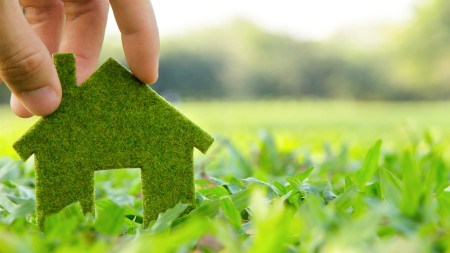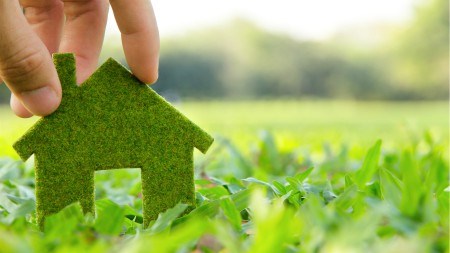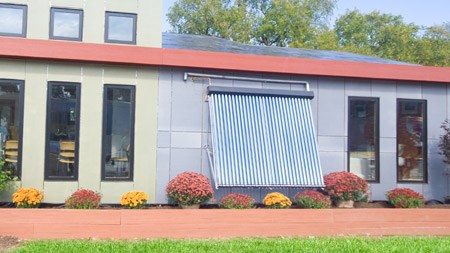Our quick guide to going green at home, and why it matters in the long run.
Your green home
The idea of going green at home is a well-considered trend that benefits far more than just your family and utility bills. There are lists and guides for adopting more eco-friendly practices both within your homes and as part of your lifestyle, but beyond that, the benefits extend far beyond what you may have already considered. Shifting towards a more green home makes financial and environmental sense, in more ways than you realise.
Getting started with your green home
During this period of national lockdown, you may have found yourself giving some thought towards extending the ways your household runs, to ensure that it’s more eco-friendly in the long term. If you have been considering changing fittings, services, or parts of your home, towards going green, there’s nothing to stop you starting your investigations. Of course, during our period of national lockdown, it’s not possible to renovate your home or undertake grand DIY tasks, but there’s one thing you can do: make a household plan for going green. We’d suggest you consider including these items in your to do list:
- The way you clean: Changing the way you clean your home can have a positive impact on your family’s carbon footprint, and essentially eradicate harmful chemicals from your home environment. It’s not just chemical exposure for people you need to worry about; what you use to clean your home can also affect your pets, and have a detrimental effect on your surrounding environment, as chemicals seep into the soil through waste systems.
- The things you walk on: Eco-friendly flooring might seem a step too far, but there are great ways to ensure that your family walks gently upon the earth, thanks to your flooring choices. If you’re considering renovations in the future, choosing an eco-friendly flooring option should be on your list.
- The way you eliminate pests: Eliminating harmful chemicals from your garden and home needn’t mean you have to live with pest infestations. Instead, replacing your pest control solutions with products and mechanisms that are less harmful is relatively simple. Think big, and consider replacing plants in your garden, or using your garden’s features to naturally repel pests and unwanted insects. Check out this useful guide for going green in your garden.
- The things you need in your home: Replacing fittings, machinery, and important items you need in your home, is another aspect that can make a substantial contribution towards your mission of going green at home. Remember that fittings and machines should serve both eco-friendly and financially friendly purposes. A new heating system should not rely upon the consumption of excessive electricity, and you might want to consider installing a solar-powered geyser. You can also begin researching new ways to go “off grid” by installing solar powered services in your home, or finding alternative ways to power your home.
- The way you manage your waste: Adopting the approach of “Reduce, Reuse, Recycle” pays off in dividends, and in strange ways. By simply adopting a new approach towards managing your household waste, you’ll find those garbage bags are not as heavy as they used to be. That’s been my favourite finding when we adopted a different way of managing our household waste, in an effort to move towards going green at home.
An attractive investment
While we’re under national lockdown, it can seem difficult to contemplate how you’ll sell your home. But, if selling your home is something you are considering over the next year or two, it makes sense to start thinking about ways to make your home more attractive to interested buyers. Here’s a big tip, from us to you: going green makes extreme sense when you’re trying to sell your home. Not only does it make it more attractive to the property buyers who are keen to go green, but it also pays off for them in the long term, as they’ll be paying less on their utility bills and maintenance fees. Moreover, you may be able to ask for a higher selling price, when compared to a similar home to yours, as the benefits of green features are well understood and admired by potential buyers.
Going green when you build
If you are considering renovations when the right time comes, now’s a great time to consider adopting an eco-friendly approach to your building needs. A practice known as “deconstruction” sets out to reuse building materials that would usually be discarded during renovations, and finding eco-friendly building materials when you’re expanding your home can make a big difference too. Homes that are built or expanded upon using a ‘green’ approach often attract higher selling prices, and are generally far more resilient to financial market and environmental changes.
Going green at the bank
In March 2020, the first green home loan service was launched by Balwin Properties, in collaboration with ABSA. Made available for people who want to extend their journey of going green, the ABSA Eco Home Loan will be an option for interested buyers who are keen to purchase eco-friendly homes. These are homes that have been built with the surrounding environment in mind, and have adopted ways of going green that count, including energy efficient lighting, solar powered panels, and eco-friendly flooring.





